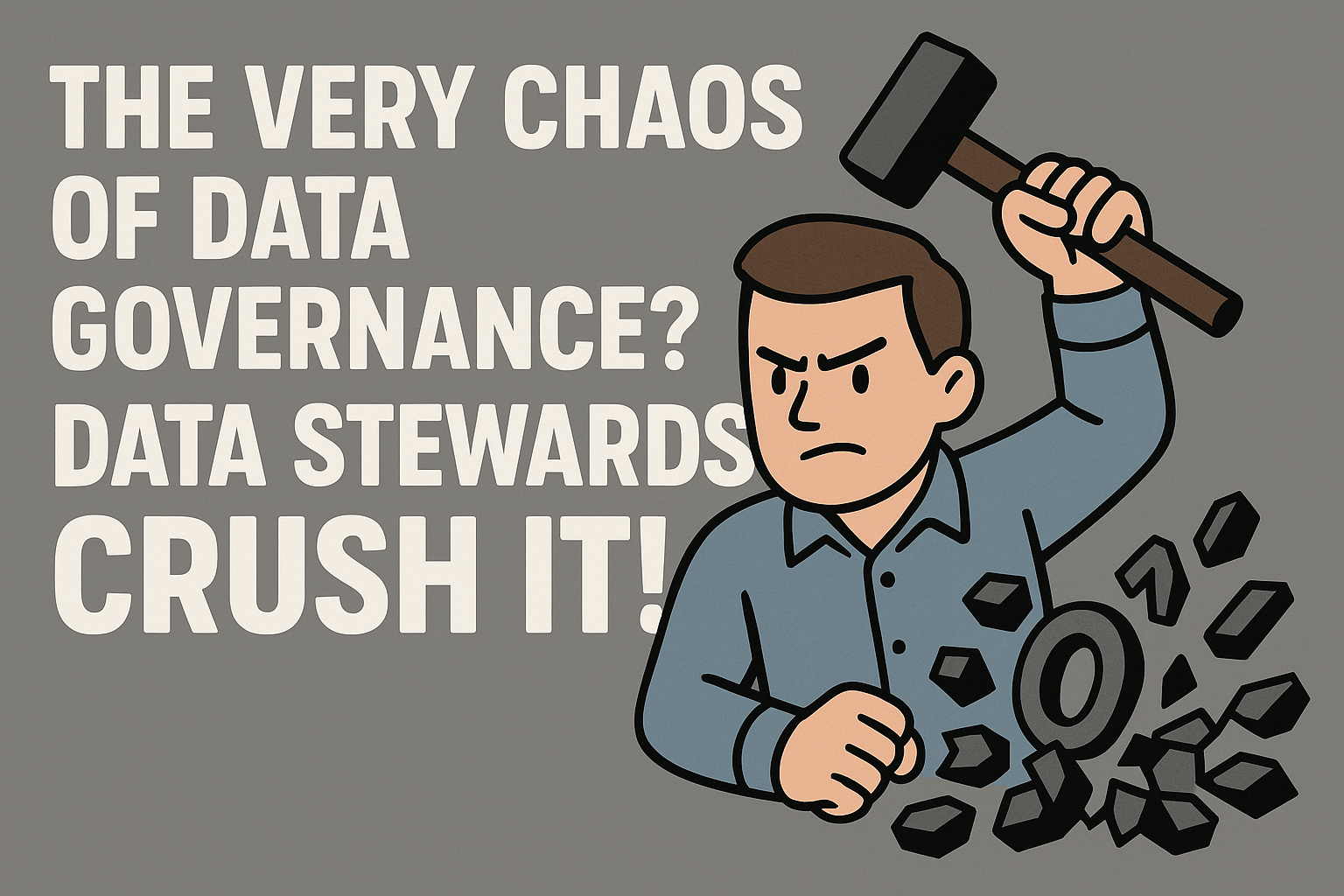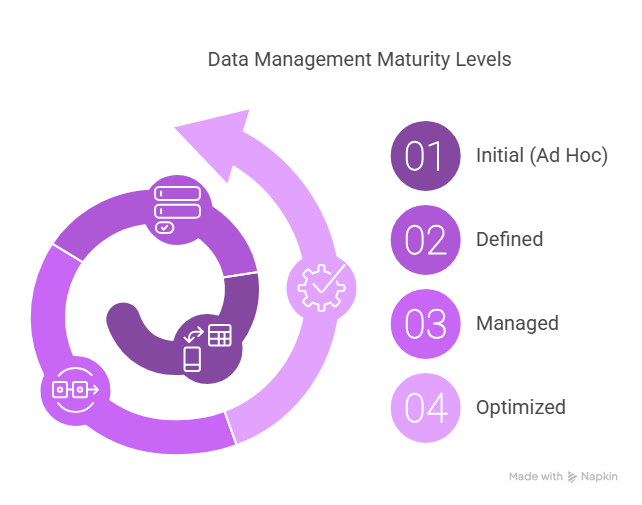A Maturity Map is essential for creating a structured roadmap in data governance. It helps organizations not only plan their journey but also assess their current level of maturity.
What Is a Data Governance Maturity Map?
A Data Governance Maturity Map helps organizations assess how well they manage, protect, and utilize data. It provides a step-by-step roadmap for improvement, much like checking your fitness level before starting an exercise program.
This map answers key questions:
- Where does our organization currently stand in data governance?
- What do we need to improve?
- How do we progress from a basic level to advanced governance?
By identifying current strengths and gaps, organizations can develop a realistic improvement plan rather than attempting everything at once.
Typical Maturity Levels in Data Governance
Research-based maturity models, such as those from DAMA (Data Management Association) and EDM Council (Enterprise Data Management Council), typically classify governance maturity into four or five levels.
| Maturity Level | Description | Key Characteristics |
| 1. Initial (Ad Hoc) | Data management is reactive, no formal processes exist. | – No governance policies. – Quality issues are addressed only when problems arise. – Lack of awareness or training. |
| 2. Defined | Basic policies and procedures are established, but inconsistencies remain. | – Governance policies are documented. – Roles and responsibilities are defined. – Initial data quality checks begin. – Some employees receive training. |
| 3. Managed | Governance is well-established and applied consistently across the organization. | – Integrated into business processes. – Regular audits and monitoring. – Data stewards are designated and trained. – Quality metrics are tracked. |
| 4. Optimized | Governance is continuously improved and aligned with business strategy. | – Performance is optimized based on data. – A data-driven culture is established. – Advanced analytics and AI are utilized. – Continuous improvement efforts. |
These maturity levels are inspired by models such as DAMA’s Data Management Capability Assessment Model (DM CAM) and EDM Council’s Data Management Maturity Model.
By assessing their current level, organizations can determine what steps are needed to advance to the next stage.
Assessing Your Organization’s Current Maturity Level
A Maturity Map helps organizations identify where they currently stand. Consider the following questions:
- Do we have documented governance policies?
- Are data stewards assigned?
- Do we have a structured system for data quality management?
For example:
- If governance policies do not exist and teams react to data issues only when they arise, the organization is likely at Level 1 (Initial).
- If basic governance policies are in place but not fully implemented across departments, it may be at Level 2 (Defined).
Once the current level is identified, the next step is planning improvements.
A small business owner might realize:
- “We are at the initial level, so our first step is to create data policies.”
- Within a month, basic governance structures are in place, moving the business toward Level 2.
Identifying Next Steps for Improvement
After assessing the current maturity level, the next question is:
- What steps should we take to reach the next level?
Examples of progressive improvements:
- From Level 1 to Level 2: Establish governance policies, define roles, and initiate staff training.
- From Level 2 to Level 3: Ensure governance policies are applied consistently, implement regular audits, and designate trained data stewards.
- From Level 3 to Level 4: Integrate governance into business strategy, utilize data-driven decision-making, and apply advanced analytics.
For example, a company at Level 3 (Managed) might set a goal:
- “To reach Level 4, we need to enhance our analytics capabilities and build a data-driven culture.”
By implementing better analytics tools and training employees on data literacy, they improve decision-making and optimize performance.
Different Maturity Models for Different Organizations
Various organizations use different models to assess maturity. Some well-known models include:
- DAMA’s DM CAM (5 levels)
- EDM Council’s Data Management Maturity Model (5 levels)
- Simplified 4-level models used by smaller organizations
Each model serves a different purpose:
- Large enterprises might benefit from the EDM Council model, which provides a comprehensive structure.
- Small businesses might prefer the DAMA model, which is easier to implement.
For example, a startup founder might ask:
- “Which model should we use?”
- If they are new to governance, a simplified model may work best.
- If they aim for advanced governance, a detailed framework like EDM Council’s is more suitable.
A small business owner might start with DAMA’s basic framework, then transition to a more sophisticated model as their governance matures.
Additional Resources for Maturity Assessment
To further refine governance maturity, organizations can use assessment tools from:
- DAMA: Provides DM CAM tools for evaluating governance capabilities.
- EDM Council: Offers detailed evaluation methods through their Data Management Maturity Model.
These resources help organizations benchmark their progress more accurately.
Unexpected Insights from Maturity Mapping
One surprising aspect of Maturity Maps is that they reflect not only technical capabilities but also organizational culture.
- To reach the optimized level, employees must recognize the value of data governance.
- A strong governance framework won’t succeed if employees don’t follow it.
Additionally, different models emphasize different criteria, so organizations must consider:
- “Does this model fit our company’s structure and industry?”
A small business owner might say:
- “This model feels too complex!”
- Instead of overcomplicating things, they can start with a simple framework and expand gradually.
The key is flexibility—adapting the Maturity Map to fit organizational needs.
Final Takeaways
A Data Governance Maturity Map is not just a measurement tool but also a strategic guide for building a governance roadmap.
- Assess your current governance level to understand where you stand.
- Identify the next steps to gradually improve governance.
- Choose a model that fits your organization’s size and needs.
- Use external resources to refine the assessment and gain deeper insights.
By following a structured maturity-based approach, organizations can transform governance from a reactive process to a strategic asset.

